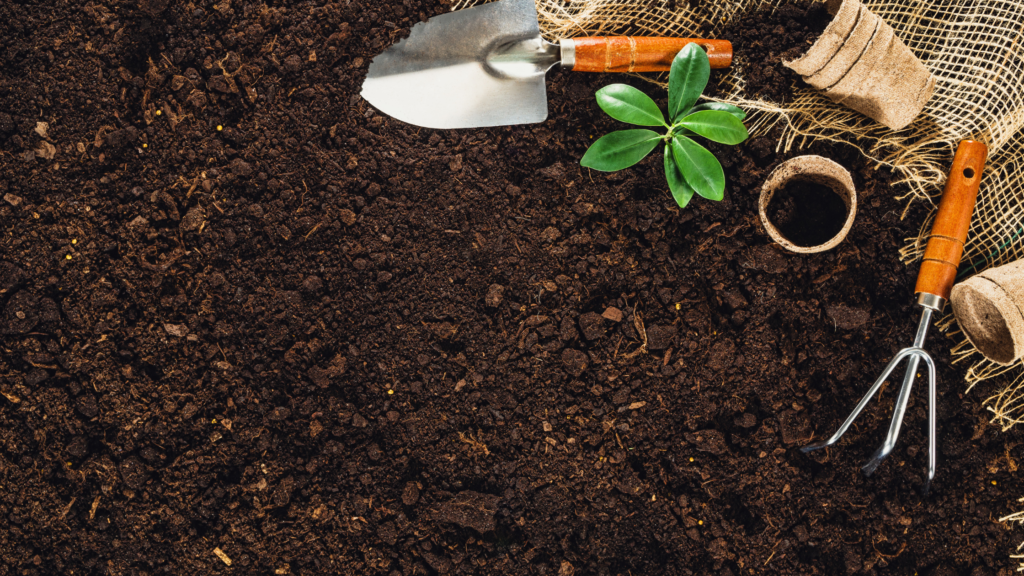Why You Need Seed Starting Soil and How to Make Your Own
If you’re planning on starting your garden from seed, then you’ll want to make sure you use seed starting soil. This type of soil is different from regular potting soil and will give your seeds the best chance at germination. Not only that, but your plants will be stronger and healthier overall.
Don’t worry if you can’t find seed starting soil at your local store, though. You can easily make your own with just a few simple ingredients. Keep reading to learn more about why seed starting soil is so important and how to make your own.
This post may contain affiliate links. This means I may earn a small commission at no extra cost to you.

Why you need seed starting soil
Working toward homesteading or homeschooling goals? Grow your own food! To get the most out of your garden, you’ll want to use seed starting soil where you can. Not only does it help ensure better germination rates so more of those little seeds sprout and yield those delicious fruits and vegetables, but it also gives your young plants what they need to grow strong and healthy. With the right soil, a few simple supplies, and some TLC, you can have a bountiful harvest that will make all the hard work worth it.
You may also be interested in this article: HOW TO START SEEDS INDOORS – GARDENING WITH KIDS BASICS
The benefits of using seed starting soil
Growing your own plants from seeds indoors can be a fun and rewarding experience. Before you get started, however, it’s important to remember the benefits of using seed starting soil in place of traditional outdoor soil. This special blend of medium is formulated to give the ideal balance of nutrients for germinating and growing healthy seedlings. Its light and fluffy structure helps keep options in check, allowing water to travel easily through it without compressing or clumping. The different varieties available also have added features such as plant food and mildew preventatives so you can give your little sprouts the best chance at a strong future! With seed starting soil, you want to AVOID compost and fertilizer until you transplant your seedlings into bigger containers. The seeds do no benefit from the extra nutrients during germination; the extra can actually harm the plant during the germination cycle. You can find some of my favorite types listed below (store bought).
How to make your own seed starting soil
Growing your own vegetables or flowers can be a rewarding and enjoyable experience, but one of the most important steps in ensuring success is to choose the right soil for starting your seeds indoors. Seed starting soil is especially formulated to provide the ideal environment for tiny seeds to germinate and grow into healthy plants. Making your own seed starting mix at home can be easily done with the right ingredients; all you need are coconut coir or peat moss, vermiculite, and perlite. With just these items, you could craft an optimal blend of organic matter that will give your plantlings the best possible growing conditions for optimum growth. You can add compost once you repot your seedlings but do not use it in your initial soil. The compost can burn the seeds and it also can cause the seeds to compete with with ‘weed seeds’ and lose nutrients during the crucial days of germination.
Seed Starting Soil Recipe
- 8 Parts Coconut Coir (or Peat Moss)
- 1 Part Perlite
- 1 Part Vermiculite
When I create this, I use it in cup increments. That will break down to 8 cups of Coconut Coir, 1 cup Perlite, and 1 cup Vermiculite per batch. You can pick these items up at your local Nursery Store and Home and Hardware Stores or you can order directly from Amazon. The perk of Amazon is that you can order in ‘bulk’ for cheaper which is nice to have unhand throughout the seed starting season.
Tips for using seed starting soil
Starting seeds indoors? The key to success is using seed starting soil! Not only will you achieve a higher germination rate, but the right soil will ensure your plants grow with the utmost strength. There are a few tips to remember when selecting and using seed starting soil: fill your pots with loose, airy soil meant for germinating seeds; use trays that have drainage holes to prevent over-watering; add an organic fertilizer if you choose, or mix in products like Perlite for aeration and proper drainage; and lastly, harden off your seedlings by gradually introducing them to temperatures outside the home before transplanting them outdoors. Following these simple tips should help you create strong and healthy seedlings!
You might also be interested in: MAKING A HERB AND SENSORY GARDEN FOR CHILDREN
After understanding why this type of soil is essential and the many benefits it can provide, you are all set to begin using it. Whether you decide to buy soil from a store or make your own mix of ingredients, you now know the importance of this soilless media. And don’t forget those helpful tips — use a container that has drainage holes reserved for water runoff, monitor moisture for best results, and use a heater mat to encourage germination. In closing, these simple steps taken together can help lead to your success in beginning seeds indoors for your garden bed or containers outside! Now that you are an expert on seed starting soil, are you ready for more homestead homeschooling? I offer loads of information about gardening and other topics through my Instagram page. Let’s begin this exciting journey together!
Be sure to follow me on Instagram for more tips, tricks, and resources on homesteading, homeschooling, and parenting outdoors.

